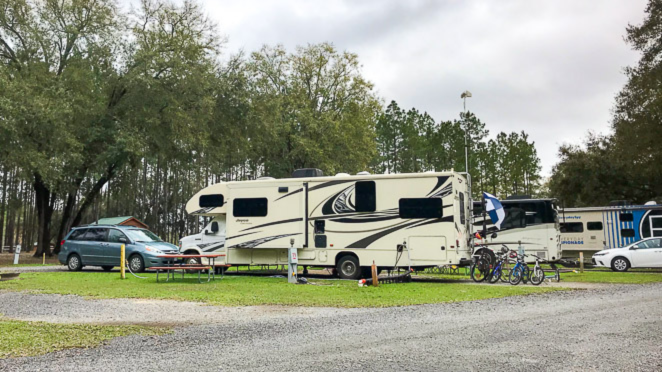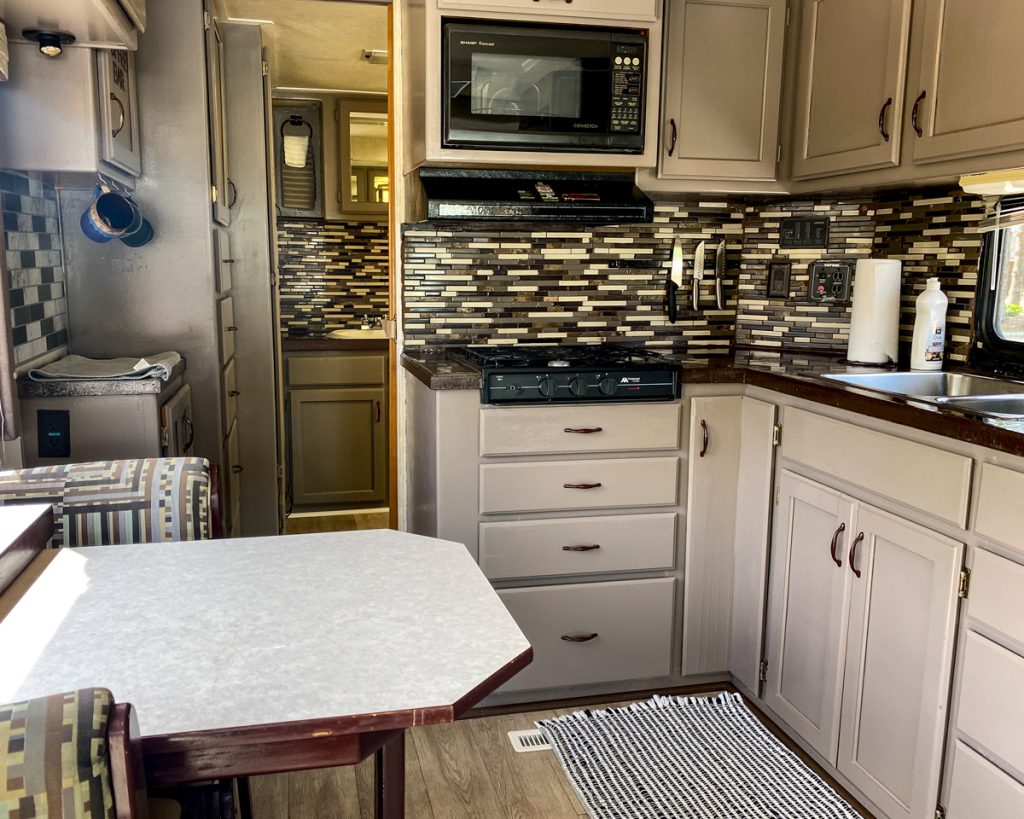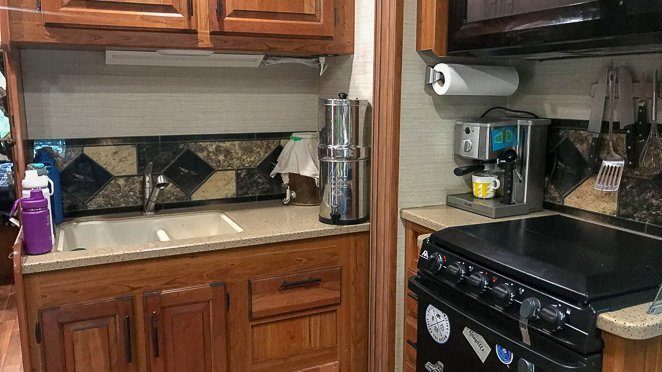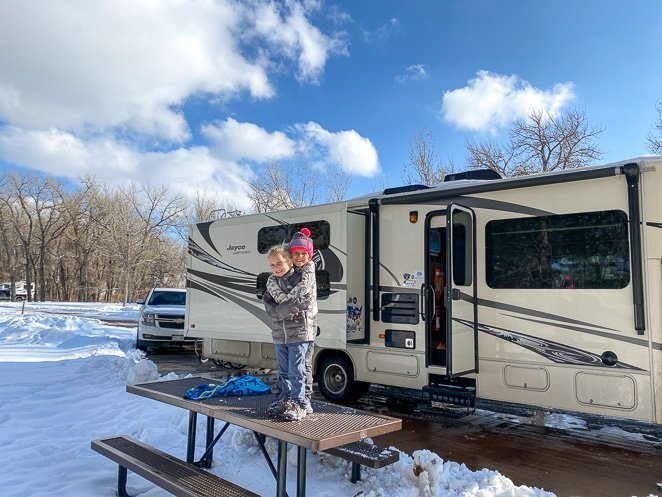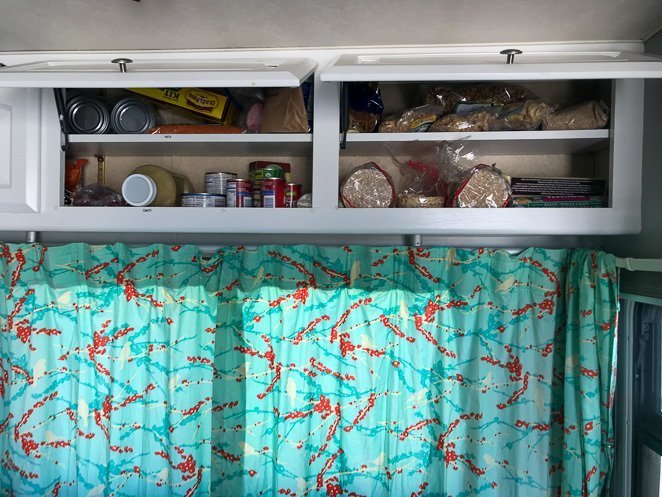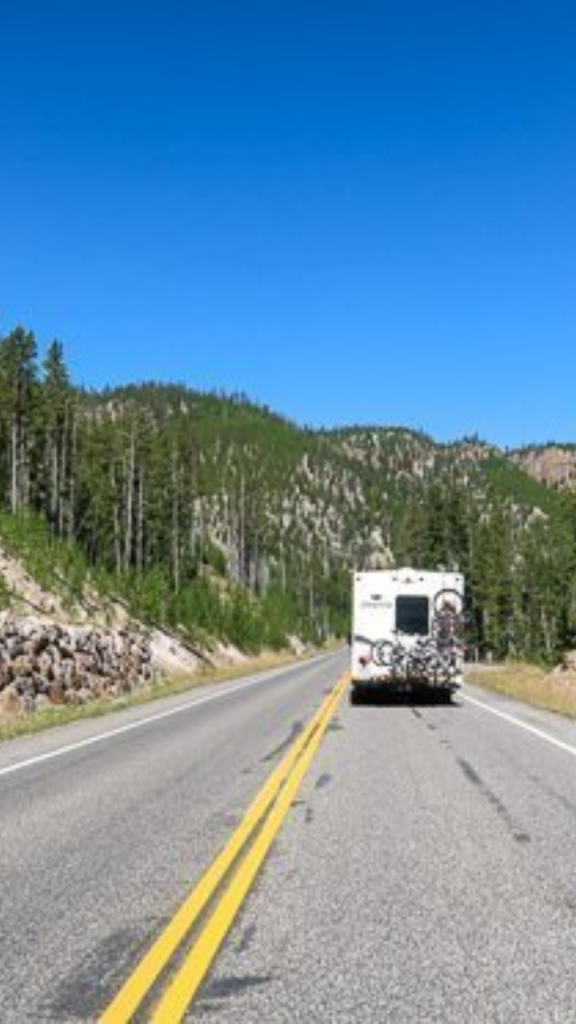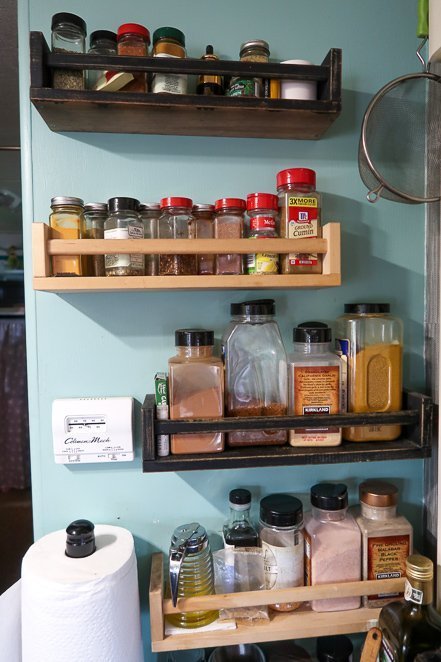Hey there, ready for the ride of a lifetime? We’re talking about how to prepare for full-time stationary RV living – yep, making a home out of your RV, like literally.
If you’ve been doing research on full time RV living, stationary RV living must have crossed your mind at least once. Although it’s nothing too different from traditional RV living, stationary RV living is basically just living in your RV in one place– just like a campsite, but more permanent.
So, if you’re curious about this lifestyle and eager to learn more, stick around as we delve into the ins and outs of stationary RV living for beginners and other things you should know about!
THIS ARTICLE MAY CONTAIN COMPENSATED LINKS. PLEASE READ OUR DISCLAIMER FOR MORE INFO. THIS POST WAS WRITTEN BY JILL GREISING-MURSCHEL, A FAMILY TRAVEL AND RV LIVING EXPERT.
Choosing the Right Location for a Stationary RV
Before settling in your RV in one place, choosing the right location is the most important step. After all, your stationary RV will be your home, so you want to ensure it’s in a spot that works for you. Let’s explore some key factors to consider when selecting the perfect stationary RV parks near me for your stationary RV adventure.
Accessibility
When choosing a location for your stationary RV, accessibility is key. You’ll want to make sure that the area is easily reachable by road, especially considering the size of most RVs. Check for nearby highways, paved roads, and potential obstacles like low bridges or narrow lanes. Access to essential services such as grocery stores, medical facilities, and fuel stations is important.
Amenities
Another important factor to consider when choosing a location for your stationary RV is the availability of amenities. While RVs are equipped with many of the comforts of home, having access to additional amenities can make your RV living experience that much more fun.
Look for RV parks or campgrounds that offer amenities such as electricity hookups, water hookups, sewage disposal, Wi-Fi, laundry facilities, and recreational activities like swimming pools or hiking trails.
Climate
The climate of your chosen location can have a significant impact on your stationary RV living experience. Consider factors such as temperature extremes, precipitation levels, and seasonal weather patterns. If you prefer milder temperatures, seek out locations with temperate climates year-round. If you enjoy winter sports or activities, look for a location with snowy winters. Consider how the climate may affect your RV’s systems, such as heating and cooling, and choose a location that aligns with your comfort preferences.
Community
The sense of community in your chosen location can greatly enhance your stationary RV living experience. Look for areas with a welcoming and supportive community of fellow RVers or residents. A strong sense of community can provide social connections, support networks, and opportunities for shared experiences, making your stationary RV feel like a true home.
Other Relevant Factors
In addition to accessibility, amenities, climate, and community, several other relevant factors are to consider when choosing a location for your stationary RV. These may include:
- Cost of living: Evaluate the cost of essentials such as housing, groceries, and utilities in the area to make sure it aligns with your budget.
- Safety and security: Research the crime rate and general safety of the neighborhood or campground to ensure a secure living environment.
- Proximity to attractions: Consider nearby attractions, natural landmarks, and recreational activities that align with your interests and hobbies.
- Zoning regulations: Familiarize yourself with local zoning regulations and restrictions that may impact your ability to live in your RV long-term.
You can select the perfect location for your stationary RV by carefully considering these factors and conducting thorough research. Or maybe if you’re just looking forward to it, you can always search for a stationary RV rental near me and get inspiration from there.
Related blog: 15 Pros and Cons of RV Living Full Time
Setting Up Your Stationary RV
Setting up your stationary RV is an exciting step toward creating a comfortable and functional living space. From essential equipment and supplies to clever space optimization techniques, here’s everything you need to know to make your stationary RV feel like home sweet home.
Find All Stationary RV Living Must Haves
RVing is a minimalistic lifestyle, including stationary RV living. Less is more, they say, and finding your essential RV items.
If you want to know more about these items, check out our RV Must Haves blog post. You can get some ideas for a full-time stationary RV living here. After all, there are some things that you just cannot go without.
- Water Filter: Installing a water filter is an essential step for ensuring clean and safe drinking water in your stationary RV. It removes impurities and improves the taste of tap water.
- Surge Protector: Protect your valuable appliances from electrical surges by investing in a quality surge protector. It’s a small price to pay for peace of mind.
- Solar Panels: If you plan on being off-grid or want to reduce your electricity bill, solar panels are a great to lessen stationary RV living cost in the long run. They harness the power of the sun to provide renewable energy for your RV. Learn more about RV solar here.
- Composting Toilet: If you’re thinking if you can you put a regular toilet in a stationary RV, the answer is no. That’s why a composting toilet is a great alternative for stationary RV living. It’s eco-friendly and doesn’t require water or sewer connections.
- Portable Washer/Dryer: Save time and money by doing laundry in your own RV with a portable washer/dryer combo. It’s compact and perfect for small spaces. Click here to read a detailed post we wrote about RV washer and dryers.
Optimize Your Space
One of the biggest challenges of stationary RV living is making the most out of limited space. RV organization hacks and accessories can come in really handy. One of the most challenging spaces to maximize in an RV is your kitchen and closet. I wrote this post about RV cabinet storage ideas that can help. Here are some additional tips for optimizing your living space in an RV:
- Use multifunctional furniture: Look for items that serve multiple purposes, such as a foldable dining table that can also be used as a work desk.
- Utilize vertical space: Install shelves and hooks on walls to make use of vertical space for storage. This is especially helpful in smaller RVs.
- Store items under furniture: Use bed risers to create extra storage space under your bed, or utilize the empty space under your couch for hidden storage.
- Invest in collapsible items: Collapsible pots, bowls, and other kitchenware can save you a lot of space when not in use. Consider investing in these items for your RV kitchen.
Related Post: 16 Hacks for Organizing your RV Kitchen
Prepare for All Seasons
Living in an RV means being exposed to different weather conditions, so preparing for all four seasons is important. You do NOT want to do these things if you’re RVing in the winter. Here are some helpful tips instead:
- Insulate your RV: Proper insulation will help keep your RV warm in the winter and cool in the summer.
- Invest in a space heater: A portable space heater can provide extra warmth during colder months without using up too much energy.
- Use blackout curtains: These can not only provide privacy but also help regulate the temperature inside your RV.
- Keep a supply of blankets and layers: It’s always better to have more blankets and layers than you think you’ll need. You never know when the weather might change or when you’ll need extra warmth at night.
Stay Organized on the Road
Living in a small space can make it challenging to stay organized. Here are some tips for keeping your belongings and living space organized living in an RV or camper:
- Use storage containers: Invest in sturdy and stackable storage containers to keep items from shifting during travel.
- Label everything: Clearly label each storage container so you can easily find what you need.
- Utilize wall space: Install hooks or racks on walls to hang items such as hats, jackets, and even kitchen utensils.
- Don’t overpack: It’s important to be selective about what you bring with you in your RV. Only pack essentials and try to avoid duplicate items.
If you’re having trouble organizing your RV, this Organize RV e-Book is a great resource to help you get started.
Read related blog: 10 Hidden Benefits of RV Living You Didn’t Know
Budgeting for Stationary RV Living
Real-time RV living can save you money compared to living in a traditional house or apartment. If you compare it to the cost of full time RVing, it would be even more budget-friendly. Since you travel less and stay at one specific spot, you can actually cut costs while still enjoying the RV lifestyle.
These are some of the main expenses you can expect to have while stationary RV living cost:
- Stationary RV rental: This is your monthly rent for staying at an RV park or campground. It can range from $200-$1,000+ depending on location and amenities.
- Utilities: Depending on your site rental fee, some utilities such as electricity, water, and sewage may be included. If not, you can expect to pay an additional $50-$200 per month.
- Food: This is a necessary expense no matter where you live. However, since you have a smaller living space in an RV, you may find yourself grocery shopping more often and purchasing less in bulk.
- Stationary RV insurance: This is similar to traditional home insurance and can range from $300-$1,000 per year depending on coverage for your full time RV insurance. Check out some best Campervan Insurance here.
- Maintenance and repairs: Just like with any home, you may encounter unexpected expenses for maintenance and repairs on your RV. It’s a good idea to set aside some savings each month for these potential costs.
Not sure what the common maintenance and repairs you need for your RV? Here’s a complete RV Setup Checklist to get you started!
These are just the basics for the actual living expenses. You can always adjust your budget and make changes if necessary.
Creating a Sense of Home in a Stationary RV
You know the main challenge of living in your RV? It’s how you keep it organized while having decor to make it feel like a home. These are some easy RV Organization Accessories and Hacks to turn to if you need some ideas for your limited space.
- Wall shelves: These are great for storing and displaying items, while also saving space on counters and tables.
- Magnetic spice rack: This is perfect for keeping spices organized and easily accessible, without taking up valuable counter or cabinet space.
- Over-the-door shoe organizer: This versatile and inexpensive item can be used for storing and organizing a variety of items, from shoes to toiletries. It’s also a great addition to your RV bathroom organization.
- Collapsible storage containers: These are great for storing seasonal items or extra clothes, as they can easily be folded up when not in use. Read this RV Bedroom Ideas and Organization Hacks for more tips on maximizing your bedroom space.
Stationary RV living makes it easier for you to get creative since the struggle of packing up and moving to different locations is no longer there. You can make your RV feel like a cozy home by adding some personal touches and decorations that reflect your style and personality.
Find some inspiration in this Campsite Decorating Ideas blog post!
Wrapping Up
Every RV is different, and every RVer has their own unique needs and preferences. These are just a few suggestions if you’re ready to take the leap into full-time stationary RV living, but it’s important to do your own research and make a plan that works best for you.
Remember, the key to successful RV living is being flexible and adaptable. Do you have other tips or ideas for stationary RV living? Share them with us in the comments below! Happy travels!

